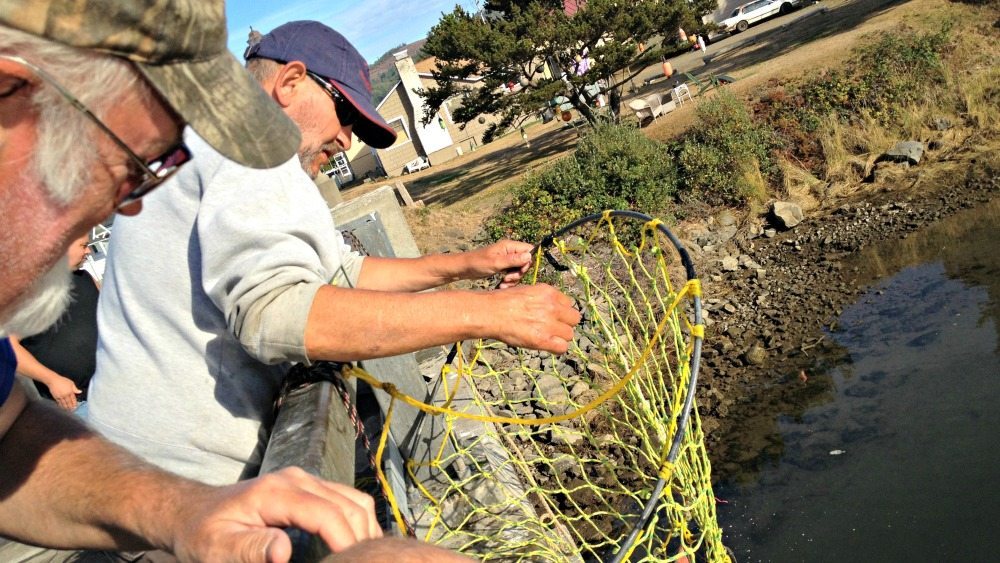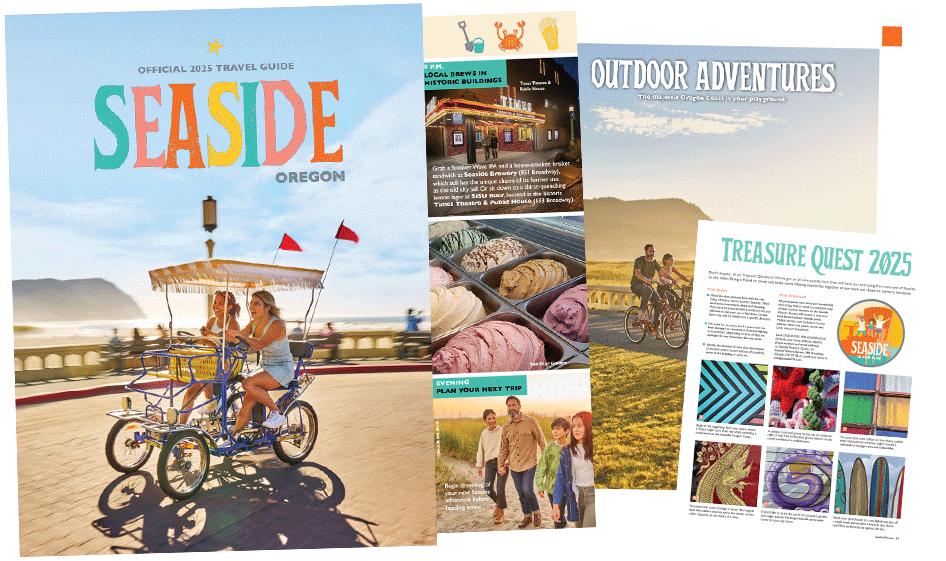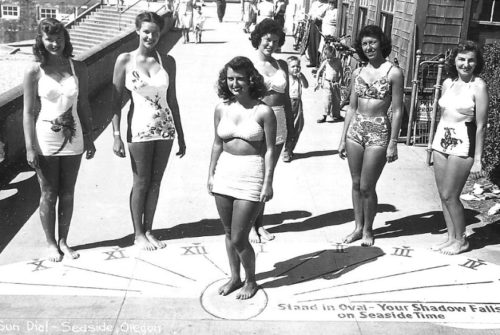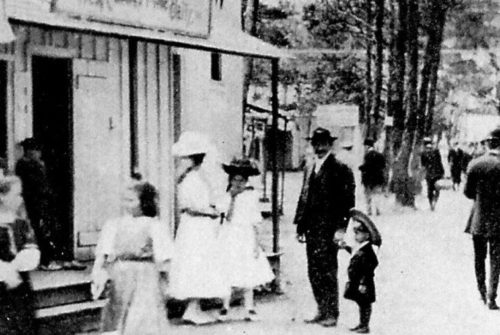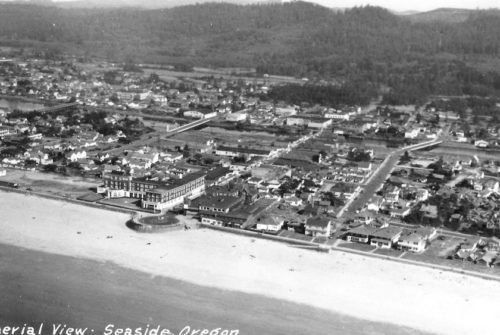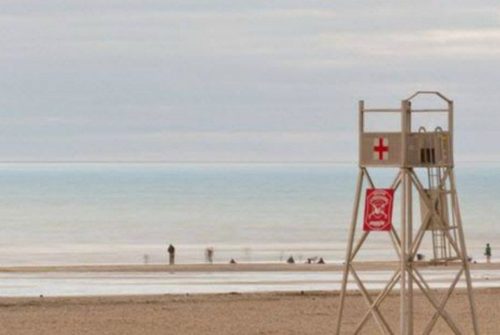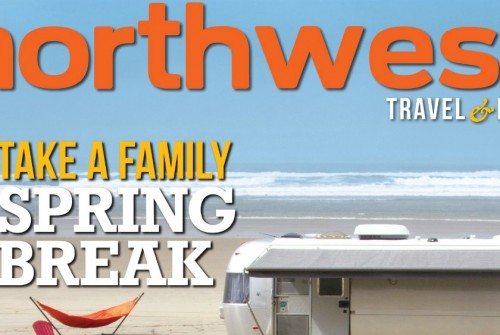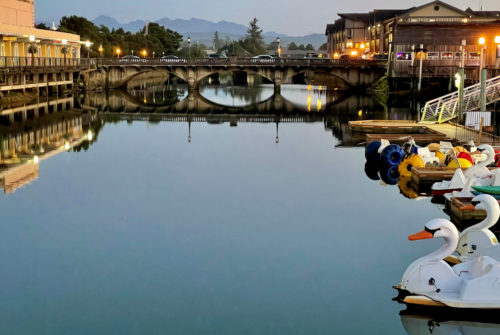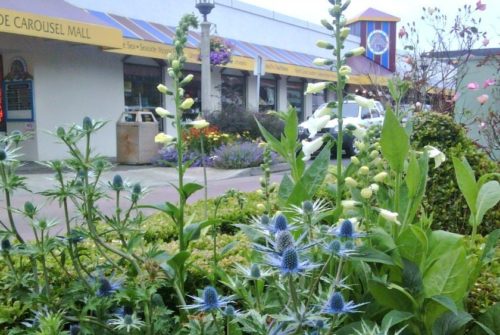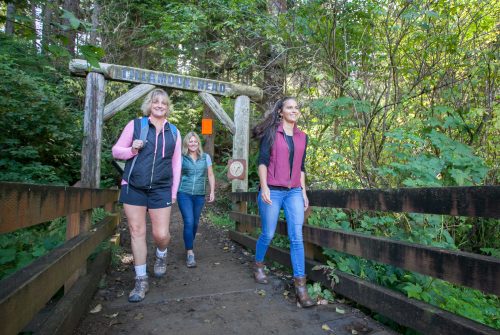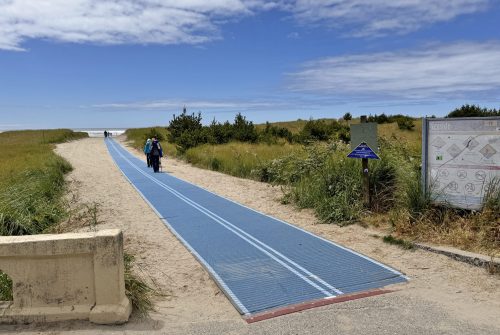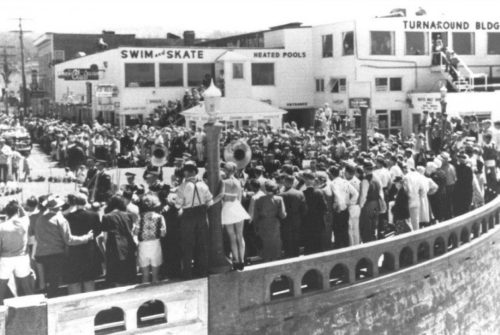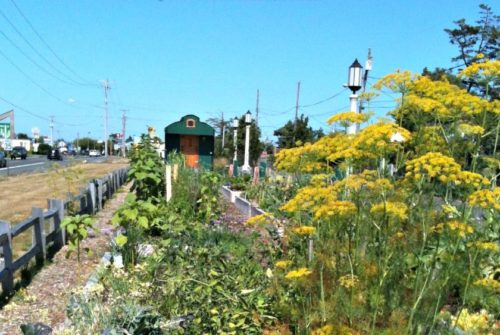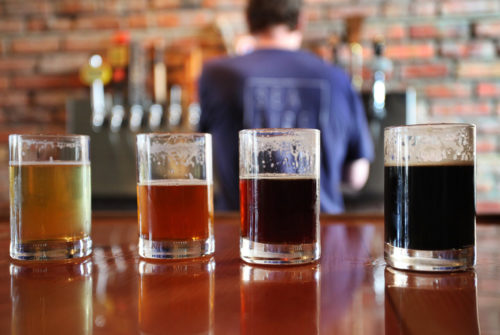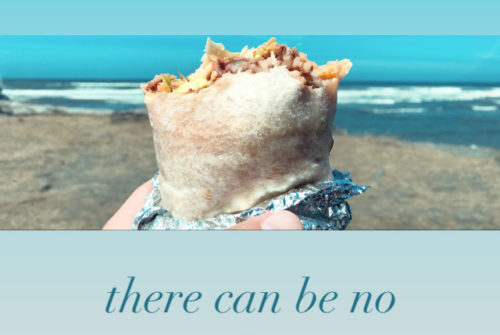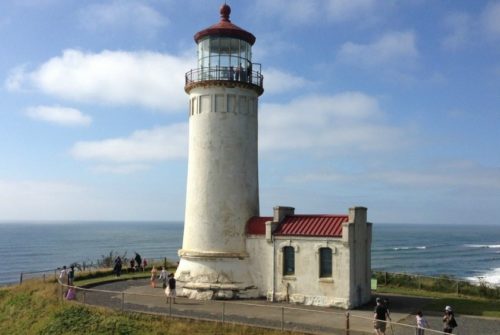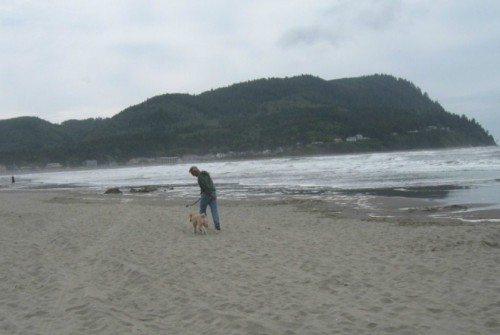My version of catching crab is typically reserved to receiving my plate at one of our many seafood restaurants in town. But it’s no secret that there are some outstanding opportunities for DIY crabbing in Seaside. What’s the local crabbing scene like? I decided to head down to the 12th Avenue Bridge to find out.
I had thought that the crabbing process would involve grueling labor and skillful claw-dodging but I was pleased to find out that catching your dinner is really quite easy. The 12th Avenue Bridge crosses the Necanicum River just shy of the estuary and is a stunning wildlife viewing area in its own right. It’s an ideal backdrop for unfolding a lawn chair, opening a cooler, and catching some rays while you wait for your inevitable crab catch.
A community of crabbers from all over the northwest were out enjoying the crisp afternoon. They are extremely knowledgeable and more than happy to share their insider’s wisdom. A group from Battleground, Washington hauled up their crab pot from the river with three large male crabs gleaming in the sunlight. “Want to hold one?” they asked. They showed me how to pick up a crab by its two rear legs, just out of reach of its pinch-happy claws.
Crab pots and hoop nets (I’m told crab pots are more reliable) are cast into the river and tied directly to the bridge. What’s the best bait to use? According to one local, crabs have a sharp sense of smell and, like humans, are attracted to rare delicacies. Surprisingly, raw chicken is a very popular and successful bait. Chicken is as delicious to a crab’s palette as, well, crab is to ours. The scent in the water distinguishes itself from more common fare and I guess even crabs get a little weary of eating seafood all the time.
Crabbing in Oregon’s bays and estuaries is open year round and according to the 12th Avenue Bridge crabbers, a 4-hour venture will nearly always yield a feast. However, September through December tend to yield meatier crabs. The best times of day tend to be right at high or low tide when the crabs don’t have to fuss with the tidal exchange currents.
What does a beginner need to get started? In Oregon, you’ll need a shellfish license , your crab pot or hoop net, a rope, and bait. Around Seaside, Trucke’s and Bud’s Campground can supply permits, bait, and all of your gear rental needs.
The evening ended at the 12th Avenue Bridge with a group setting up a large portable boiler and beginning their evening banquet. “What’s the largest crab you’ve ever caught out here?” I asked a family from Vancouver. The father gazed out towards the distance and replied, “9 inches, not including the legs”. He was quickly challenged by his wife and son but he persisted: “I’m serious! It was the Moby-Dick of Dungeness crab! I ate him with garlic butter!” Being a newcomer, that’s all the proof I needed. But the rest of the family remained skeptical. I’m hoping to catch my own Moby-Dick Dungeness here soon. See you in Seaside!
Editor’s note: For more information on Oregon’s recreational crab fishing, including recreational shellfish regulations, check out the Oregon Department of Fish and Wildlife’s crabbing page here.
